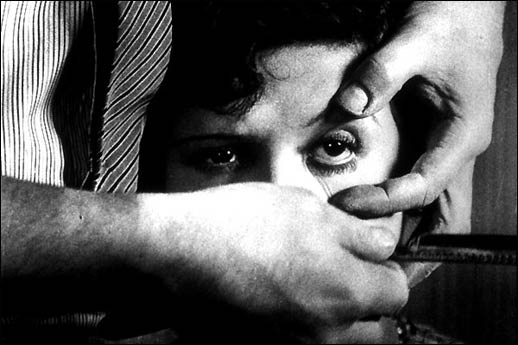City of God (2002) explores the hostile environments of the favela communities based in the heart of Rio De Janeiro. To a certain extent the representations of the people and places it focuses on are fairly realistic. Real life footage towards the end of the film of an interview with the real "knock-out Ned" reinforces the realness of this film and the fact that these people and places are real and happen in reality.
Lil Z rules over the favelas with his megalomania attracting others who have the need for power i
Thursday 15 May 2014
Sunday 23 March 2014
Sunday 2 March 2014
Friday 14 February 2014
Aims & Context
- Short experimental film
- I aim to produce a short film around 3-5 minutes long
- Avant-garde visuals (black and white, high contrast low-key lighting)
- Elements of surrealism (dream logic, non-narrative form)
- French New-Wave camera/editing (jump cuts, long takes)
- Documentary like shots (french new-wave)
- Target audience will be more art-house/exhibition/gallery as opposed to mainstream cinema complex
Main Influences
- Luis Buneul - strong use of dream logic and giving my film a non-narrative form. A lack of clear relationships between characters, such as that used 'Un Chien Andalou'
- Chris Cunningham - After watching 'Rubber Johnny' I took strongly to Cunningham's abstract form in the form of lighting and sound
Friday 7 February 2014
Friday 24 January 2014
FIGHT CLUB
17) How useful has a particular critical approach been in
gaining a deeper understanding and appreciation of your chosen film?
For me, the crisis of masculinity was the most useful
critical approach. The first time I watched Fight Club I simply thought that
the film was about men fighting half naked to relieve their overwhelming stress
from the pressures of a rapidly changing culture . Watching it for a second time and after being
introduced to ideas such as the crisis of masculinity, I became more aware of
the deeper concepts entwined within this film. The crisis of masculinity arose
in the late 1990’s and essentially caused men to lose a sense of identity due
to heavy change in popular culture. This can be seen prominently in the
‘Self-Help Testicular Cancer Group’ that the narrator attends during the
beginning of the film. Aspects of the crisis of masculinity can be seen through
the text and in particular the mise en scene. The group is sat around in a
circle in a basket-ball court, this alone strongly connotes the crisis of
masculinity as this environment is so typical used for men partaking in
sporting activities, a strong trait of masculinity. Instead, these men are sat
around in a circle being encouraged to share their problems and hug each other,
a very feminine act. The self help group is for men with testicular cancer, and
for who have had their testicles removed. This loss of their testicles is
feminising these men as they have lost what is most typically associated with
masculinity. In terms of character, Bob embodies the crisis of masculinity. He
is first introduced by the narrator saying “This is Bob, Bob has bitch tits”.
We learn that he has breasts due to the eostrogen treatment he was given after
his testicles were removed. Not only has
his testicles been removed and the growing of his breasts project the crisis of
masculinity, but his name ‘Bob’ is one letter short of the word ‘Boob’.
Subscribe to:
Posts (Atom)
